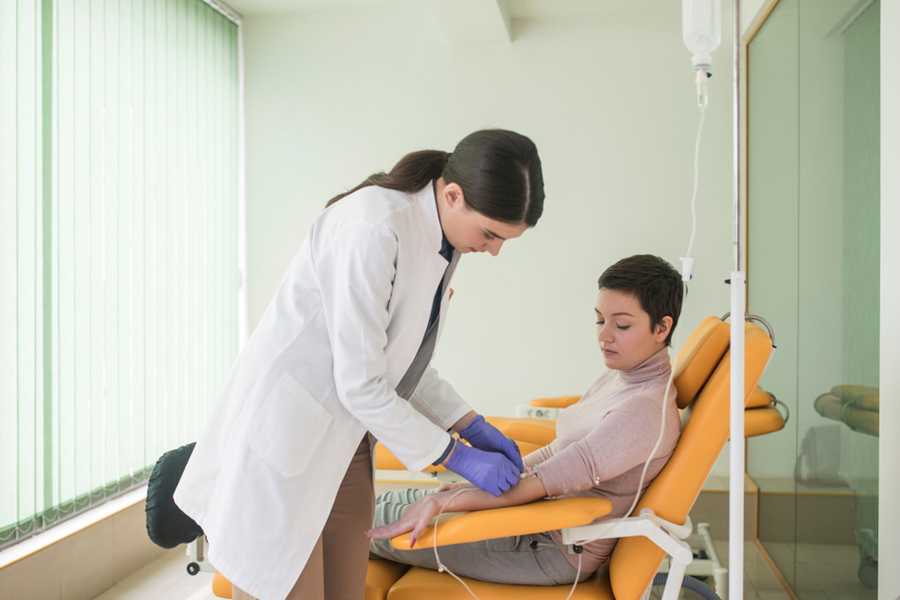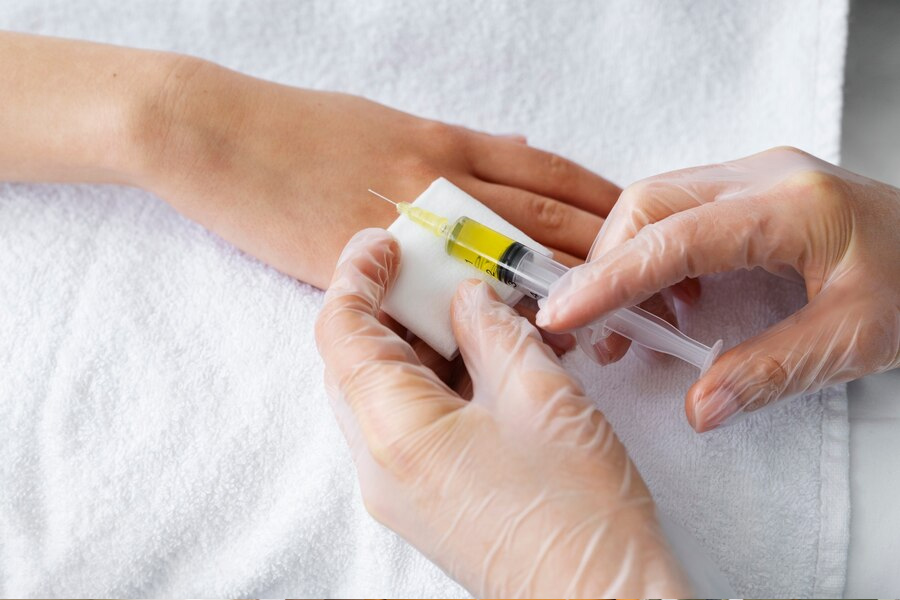
Have you ever wondered how certain medications or nutrients are delivered directly into your body when pills just won’t do the job? For many people, medical infusion therapy is the answer. This treatment delivers essential medications or nutrients directly into your bloodstream, offering quick relief and targeted care. In this article, we explain this infusion therapy and what you should expect if you're about to undergo this treatment.
Table of Content:-
What Is Medical Infusion Therapy?

Medical infusion therapy refers to the process of delivering medications, nutrients, or fluids straight into the bloodstream via a vein. This process is typically used for conditions that cannot be effectively treated with oral medications. By bypassing the digestive system, infusion therapy allows for faster absorption and higher concentrations of the medication in the body, making it ideal for critical treatments. According to the Centers for Medicare & Medicaid Services, infusion therapy can be administered in a medical facility or at home, depending on the treatment plan. For instance, insulin injections are a common example of home-based infusion therapy.
It is often recommended for patients who need:
- Antibiotics or antifungal medications for severe infections
- Chemotherapy or immunotherapy for cancer
- Biologic drugs for autoimmune disorders like rheumatoid arthritis, Crohn's disease, or lupus
- Hydration therapy for severe dehydration
- Pain management for chronic or acute conditions
Also Read: Chemotherapy: What Is It, How Is It Done and Who All Require It
How Does Infusion Therapy Work?

The process typically involves inserting a thin, flexible tube (catheter) into a vein, usually in the arm. In some cases, a central line or port may be used for long-term treatments. The catheter delivers the medication or fluids directly into the bloodstream, ensuring immediate and effective results.
The treatment is usually administered by trained healthcare professionals, including nurses and infusion specialists. They monitor the process to ensure the medication is delivered safely and effectively.
Conditions Treated with Infusion Therapy
Infusion therapy is used to manage a variety of medical conditions, including:

Cancer Treatments
- Chemotherapy
- Immunotherapy
Chronic Illnesses
- Rheumatoid arthritis
- Multiple sclerosis (MS)
- Crohn's disease
- Ulcerative colitis
Infections
- Osteomyelitis (bone infections)
- Severe bacterial or fungal infections
Nutritional Deficiencies
- Severe malnutrition
- Electrolyte imbalances
Other Conditions
- Severe migraines
- Chronic pain
- Immune deficiencies
Also Read: Vitamin IV Therapy: Expert Explains Its Benefits, Uses, Risks, And Limitations
What to Expect During an Infusion Therapy Session

- Before your session, your healthcare provider will review your medical history and discuss the treatment plan. They may conduct blood tests to ensure the medication is safe and appropriate for your condition.
- A nurse or technician will insert the catheter into a vein. You might feel a brief pinch, but the discomfort usually subsides quickly. The catheter is held securely in place to avoid movement during the session.
- The medication is delivered at a controlled rate using an infusion pump. The duration of sessions can range from 30 minutes to several hours, depending on the type of treatment.
- Healthcare professionals will monitor you throughout the session for any adverse reactions. There is a possibility of mild pain, redness, or swelling at the injection site.
- Once the infusion is complete, the catheter is removed, and you may be asked to rest briefly. Most patients can resume their normal activities afterwards, though some treatments may require additional recovery time.
Benefits of Infusion Therapy

- Effective Delivery: Directly enters the bloodstream for rapid action.
- Customisable: Dosages can be adjusted based on individual needs.
- Versatile: Suitable for a wide range of conditions.
- Convenient: Often performed in outpatient settings, reducing hospital stays.
Potential Risks and Side Effects
While infusion therapy is highly effective, it does carry some risks. Patients might experience immediate reactions like allergic responses, chills, fever, nausea, or headaches during or shortly after the infusion.
According to the Comprehensive Cancer Centers, there’s also a higher risk of infection at the insertion site since infusion therapy often involves using a catheter or port. Proper hygiene and regular care of the infusion site can help minimise this risk. If you observe any redness, swelling, or unusual pain, be sure to inform your healthcare team right away.
[Disclaimer: This article contains information for informational purposes only. Hence, we advise you to consult your professional if you are dealing with health issues to avoid complications.]
Also watch this video
How we keep this article up to date:
We work with experts and keep a close eye on the latest in health and wellness. Whenever there is a new research or helpful information, we update our articles with accurate and useful advice.
Current Version